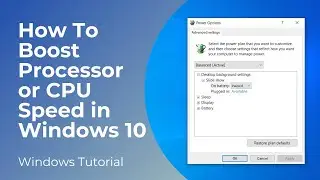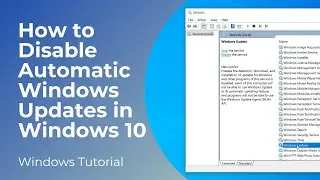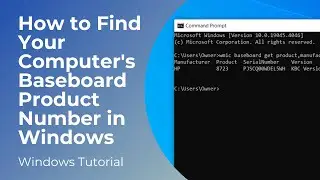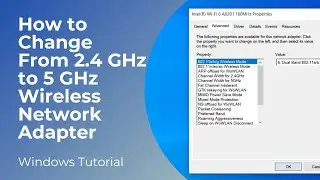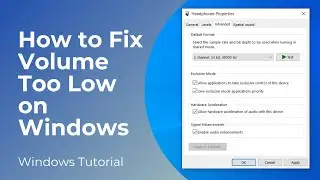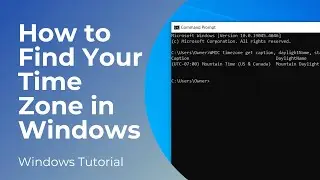What is Registry Editor? | Reg Editor Explained
In today’s tutorial, I’m going to explain what the Registry Editor (Reg Editor) application is.
The Registry Editor is a built-in tool in Microsoft Windows operating systems that allows users to view, modify, and manage the Windows Registry.
In simple terms, the Registry Editor is like a central database that stores settings and configuration information for the Windows operating system, hardware devices, software applications, user preferences, and system preferences.
The Windows Registry is a centralized database that stores information about the configuration settings and options for the Windows operating system and installed applications. It's organized into a hierarchical structure, similar to folders and files.
The Registry stores a wide range of settings and configuration data, including system settings, device drivers, user preferences, application settings, and more. This information is used by Windows and applications to customize behavior and functionality.
To access the Registry Editor, you can type "regedit" into the Windows search bar or the "Run" dialog box and press Enter. This opens the Registry Editor window, where you can navigate through the registry keys and values.
The Registry is organized into a hierarchical structure consisting of keys, subkeys, and values. Keys are like folders that contain subkeys and values. Subkeys can contain further subkeys or values, and values store specific data or settings.
In the Registry Editor, users can view, edit, create, and delete registry keys and values. However, editing the registry requires caution, as incorrect changes can potentially cause system instability or errors.
Before making changes to the registry, it's recommended to create a backup to restore the registry to its original state in case of any problems. The Registry Editor provides options for exporting and importing registry files for backup and restore purposes.
Advanced users and system administrators may use the Registry Editor to customize and fine-tune various aspects of the Windows operating system, such as tweaking system settings, configuring policies, resolving issues, and optimizing performance.
Making incorrect changes to the registry can have serious consequences, including system crashes, application errors, and data loss. It's essential to exercise caution and follow best practices when modifying the registry.
In summary, the Registry Editor is a powerful tool that allows users to view and modify the Windows Registry, which stores critical system and application configuration data. While it provides access to advanced configuration options, users should approach registry editing with caution and make changes only when necessary and with proper understanding of the potential risks involved.
#registryeditor #regedit #windows10 #windows11 #techsupport
Смотрите видео What is Registry Editor? | Reg Editor Explained онлайн, длительностью часов минут секунд в хорошем качестве, которое загружено на канал Laurence Tindall 26 Январь 2024. Делитесь ссылкой на видео в социальных сетях, чтобы ваши подписчики и друзья так же посмотрели это видео. Данный видеоклип посмотрели 2,546 раз и оно понравилось 13 посетителям.








